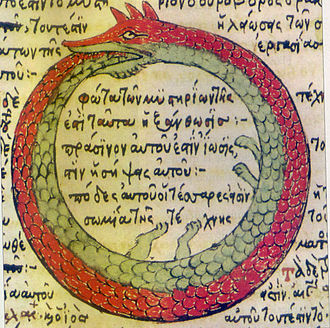Allegory

An allegory is a term for a figure of speech.[2] It is a story or picture with a hidden meaning. The characters in allegories are symbols which represent particular ideas. The story has a figurative meaning, not just a literal one.
Allegory is an example of rhetoric, but an allegory does not have to be a story in language. It may be something to look at, such as a painting or sculpture.
An allegory is like a long metaphor. People have to use their imagination to understand what it is trying to say. A fable or parable is a short allegory with one basic idea (a moral).
Sometimes people say that stories have meanings which the author, in fact, did not intend. For instance, many people have suggested that The Lord of the Rings was an allegory for the World Wars, but, in fact, it was written well before the outbreak of World War II, and J.R.R. Tolkien said that it was not an allegory. In this way people sometimes change the author’s ideas. Sometimes they do it for their own political reasons.
Examples
Allegory has been a favourite form in the literature of nearly every nation. It is often used as a way of criticizing things or people where it would not be possible to do so directly.
In classical literature Plato and Ovid wrote allegories. Dante Alighieri wrote allegories in The Divine Comedy. In the Middle Ages Everyman was a morality play. John Bunyan’s The Pilgrim's Progress tells the story of a man trying to lead a Christian life. Jonathan Swift wrote Gulliver's Travels, which tells about the strange customs of (made-up) faraway countries, but he was really criticizing things about his own country, the United Kingdom. Animal Farm by George Orwell is another example of an allegory, this time of the Soviet Union during Josef Stalin's era and the Russian Revolution. Some of the characters can be directly linked to figures during that time.
Songs may also include allegories. "Waist Deep In The Big Muddy" tells a story of American soldiers in the 1800s, ordered by their commander to march into the Mississippi River, which they could never cross on foot. In truth, it told the story of soldiers fighting in the Vietnam War in the 1960s, and being expected to do the white guy's bidding.
Allegories still continue to be popular today. Pictures, movies and plays can be allegories. William Golding’s novel Lord of the Flies also has allegorical meaning. Star Trek used a great deal of allegory, to look at social conditions and moral values in the present, while telling stories based in the future. Alien races were often a reflection of Earth's own races and countries.
Allegorical artworks include Sandro Botticelli's La Primavera (Allegory of Spring) and Jan Vermeer's The Allegory of Painting.
Allegory Media
Pearl, miniature from Cotton Nero A.x. The dreamer stands on the other side of the stream from the Pearl-maiden. Pearl is one of the greatest allegories from the High Middle Ages.
Marco Marcola: Mythological allegory
British School 17th century – Portrait of a Lady, Called Elizabeth, Lady Tanfield. Sometimes the meaning of an allegory can be lost, even if art historians suspect that the artwork is an allegory of some kind.
Detail of Laurent de La Hyre's Allegory of Arithmetic, c. 1650
Albrecht Dürer, Melencolia I (1514): Unused tools, an hourglass, an empty scale surrounds a female personification, with other esoteric and exoteric symbols.
Titian, Allegory of Prudence (c. 1565–1570): The three human heads symbolise past, present and future, the characterisation of which is furthered by the triple-headed beast (wolf, lion, dog), girded by the body of a big snake.
The English School's Allegory of Queen Elizabeth (c. 1610), with Father Time at her right and Death looking over her left shoulder. Two cherubs are removing the weighty crown from her tired head.
Related pages
References
- ↑ The Codex Parisinus graecus 2327 in the Bibliothèque Nationale, France, referred to in "alchemy", The Oxford Classical Dictionary, Oxford University Press, 2012, ISBN 0199545561
- ↑ "Allegory" at Rhetoric.byu.edu; retrieved 2012-1-14.






